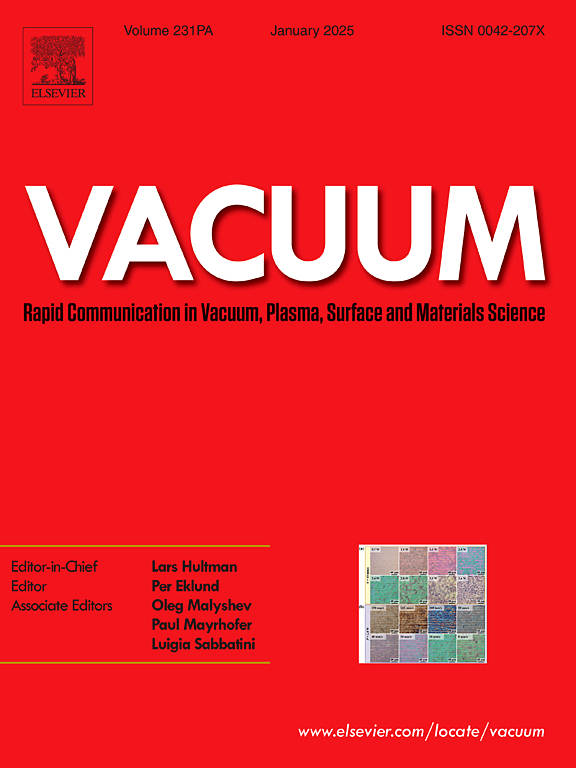Preparation of Au@AuAg yolk-shell nanoparticles with porous surface and their catalytic reduction of 4-nitrophenol
IF 3.8
2区 材料科学
Q2 MATERIALS SCIENCE, MULTIDISCIPLINARY
引用次数: 0
Abstract
Yolk-shell structure nanoparticles, consisting of outer shell, inner core and cavity, are a combination of core-shell structure and hollow structure. Due to the existence of their internal gaps, yolk-shell nanostructures have more excellent optoelectronic properties than hollow nanostructures and core-shell nanostructures, and have promising applications in catalysis, energy storage, drug delivery, lithium batteries, biosensors and nanoreactors. In this paper, gold-silver bimetallic yolk-shell nanoparticles (Au@AuAg Y-SNPs) with porous surface structure were synthesized. The morphology and structure of Au@AuAg Y-SNPs were characterized by UV–vis, XRD, SEM, TEM, HRTEM, SAED, and HAADF-STEM, the results demonstrated that the nanostructures are composed of gold and silver bimetals with various shell thickness, and tunable internal voids. In addition, the catalytic activity of the Au@AuAg yolk-shell nanoparticles were investigated based on the model catalytic reaction of hydrogenation reduction of 4-nitrophenol (4-NP) to 4-aminophenol (4-AP) with superfluous sodium borohydride. The yolk-shell nanostructure had the best catalytic activity when the ratio of Ag to Au was 1:4. The kinetic constant of the reaction, apparent rate constants (Kapp) was 0.0072 s−1 when 100 μL of this nanocatalyst was added. This suggests that Au@AuAg Y-SNPs have a promising application in the removal of pollutants from water bodies and environmental remediation.
具有多孔表面的 Au@AuAg 卵黄壳纳米粒子的制备及其对 4-硝基苯酚的催化还原作用
卵壳结构纳米粒子由外壳、内核和空腔组成,是核壳结构和空心结构的结合体。由于其内部间隙的存在,卵黄壳纳米结构比空心纳米结构和核壳纳米结构具有更优异的光电性能,在催化、储能、药物输送、锂电池、生物传感器和纳米反应器等领域具有广阔的应用前景。本文合成了具有多孔表面结构的金银双金属卵壳纳米颗粒(Au@AuAg Y-SNPs)。通过紫外可见光、X射线衍射、扫描电镜、电子显微镜、HRTEM、SAED和HAADF-STEM对Au@AuAg Y-SNPs的形貌和结构进行了表征,结果表明该纳米结构由金银双金属组成,具有不同的壳厚度和可调的内部空隙。此外,还以过量硼氢化钠将 4-硝基苯酚(4-NP)加氢还原为 4-氨基苯酚(4-AP)的模型催化反应为基础,研究了 Au@AuAg 卵黄壳纳米粒子的催化活性。当银与金的比例为 1:4 时,蛋黄壳纳米结构的催化活性最好。当加入 100 μL 该纳米催化剂时,反应的动力学常数(表观速率常数 (Kapp) )为 0.0072 s-1。这表明 Au@AuAg Y-SNPs 在去除水体污染物和环境修复方面具有广阔的应用前景。
本文章由计算机程序翻译,如有差异,请以英文原文为准。
求助全文
约1分钟内获得全文
求助全文
来源期刊

Vacuum
工程技术-材料科学:综合
CiteScore
6.80
自引率
17.50%
发文量
0
审稿时长
34 days
期刊介绍:
Vacuum is an international rapid publications journal with a focus on short communication. All papers are peer-reviewed, with the review process for short communication geared towards very fast turnaround times. The journal also published full research papers, thematic issues and selected papers from leading conferences.
A report in Vacuum should represent a major advance in an area that involves a controlled environment at pressures of one atmosphere or below.
The scope of the journal includes:
1. Vacuum; original developments in vacuum pumping and instrumentation, vacuum measurement, vacuum gas dynamics, gas-surface interactions, surface treatment for UHV applications and low outgassing, vacuum melting, sintering, and vacuum metrology. Technology and solutions for large-scale facilities (e.g., particle accelerators and fusion devices). New instrumentation ( e.g., detectors and electron microscopes).
2. Plasma science; advances in PVD, CVD, plasma-assisted CVD, ion sources, deposition processes and analysis.
3. Surface science; surface engineering, surface chemistry, surface analysis, crystal growth, ion-surface interactions and etching, nanometer-scale processing, surface modification.
4. Materials science; novel functional or structural materials. Metals, ceramics, and polymers. Experiments, simulations, and modelling for understanding structure-property relationships. Thin films and coatings. Nanostructures and ion implantation.
 求助内容:
求助内容: 应助结果提醒方式:
应助结果提醒方式:


